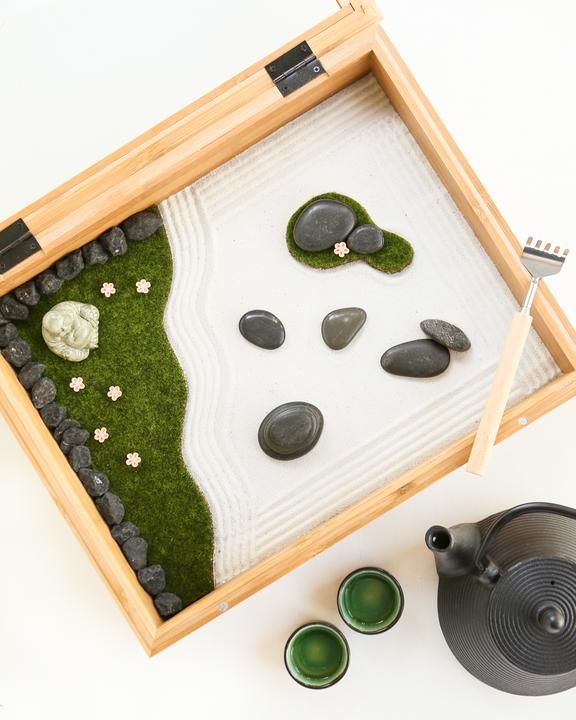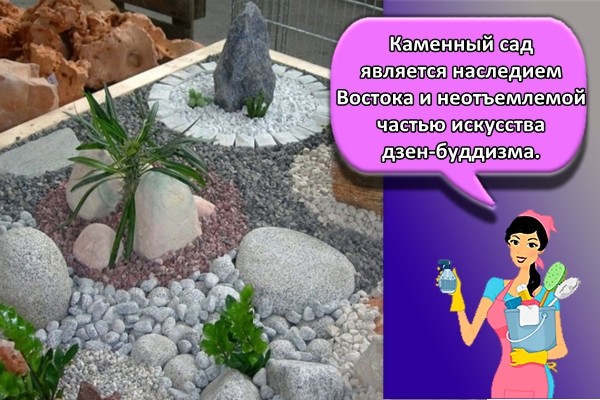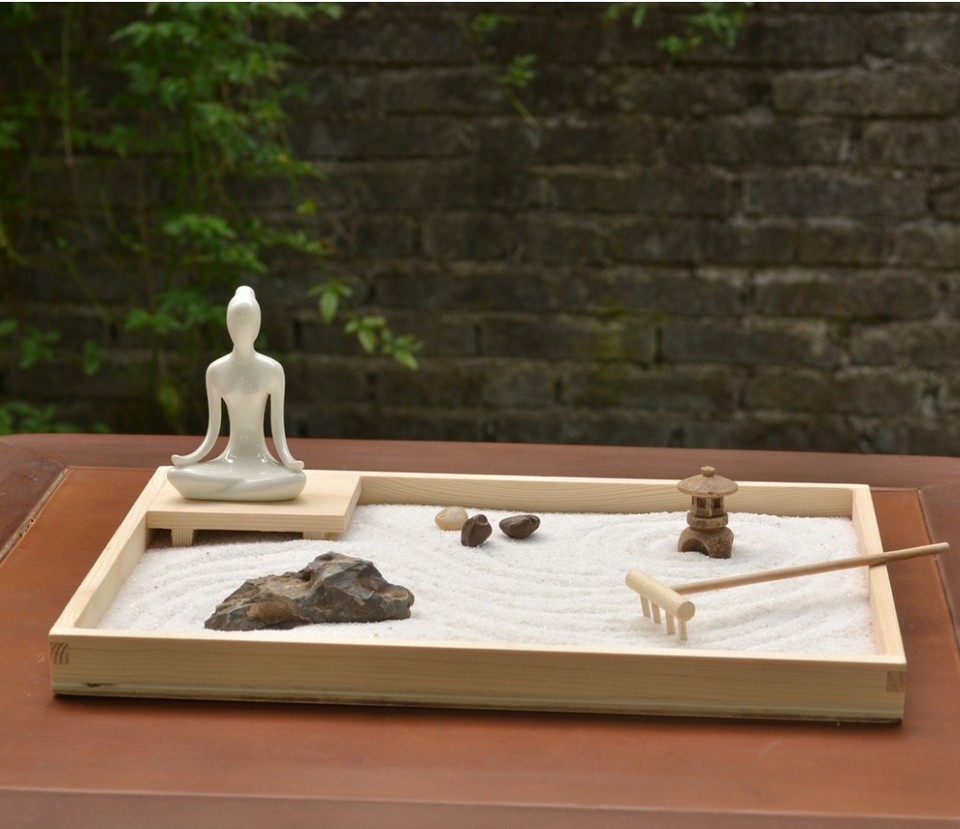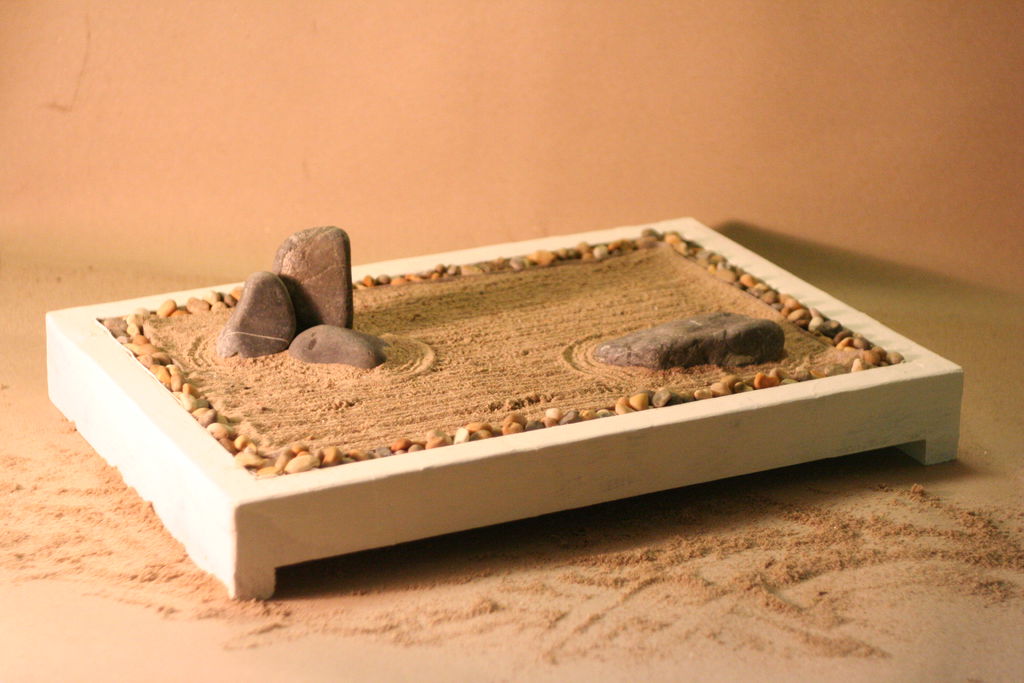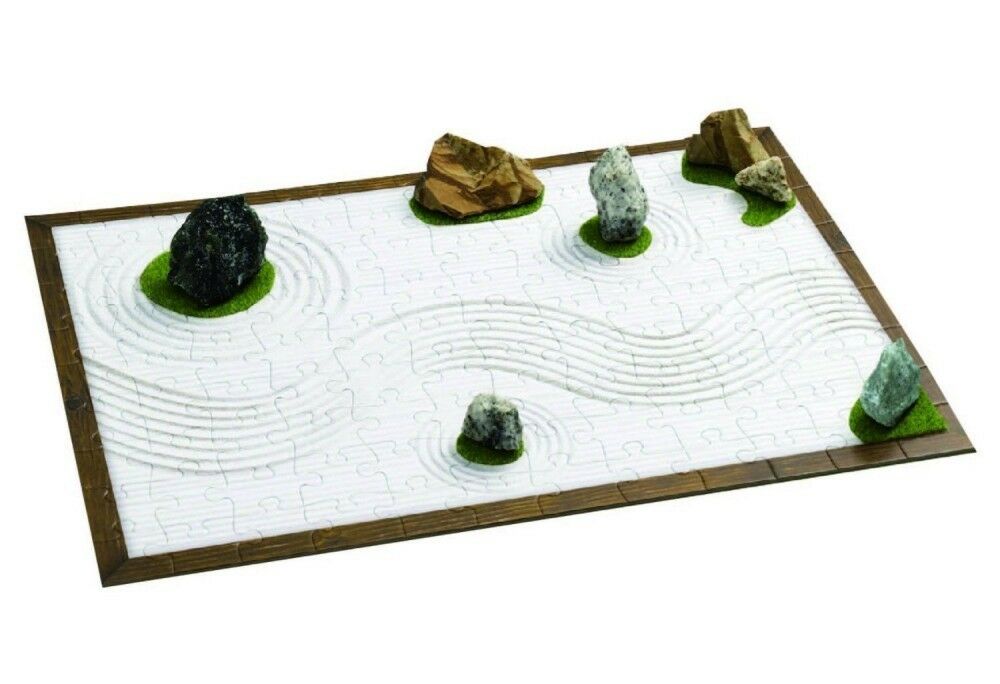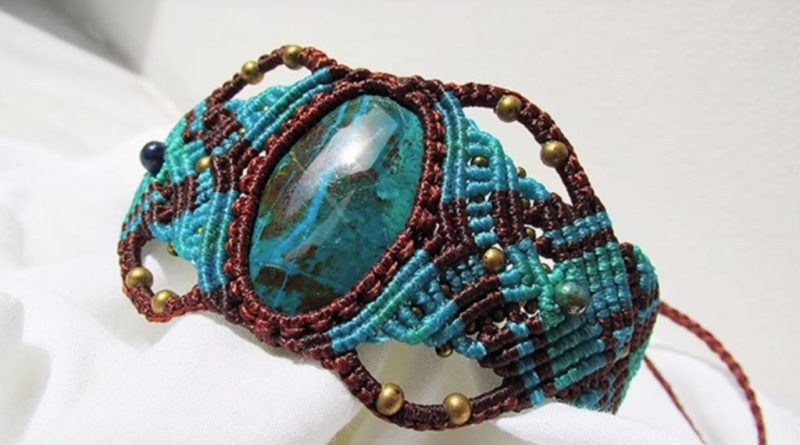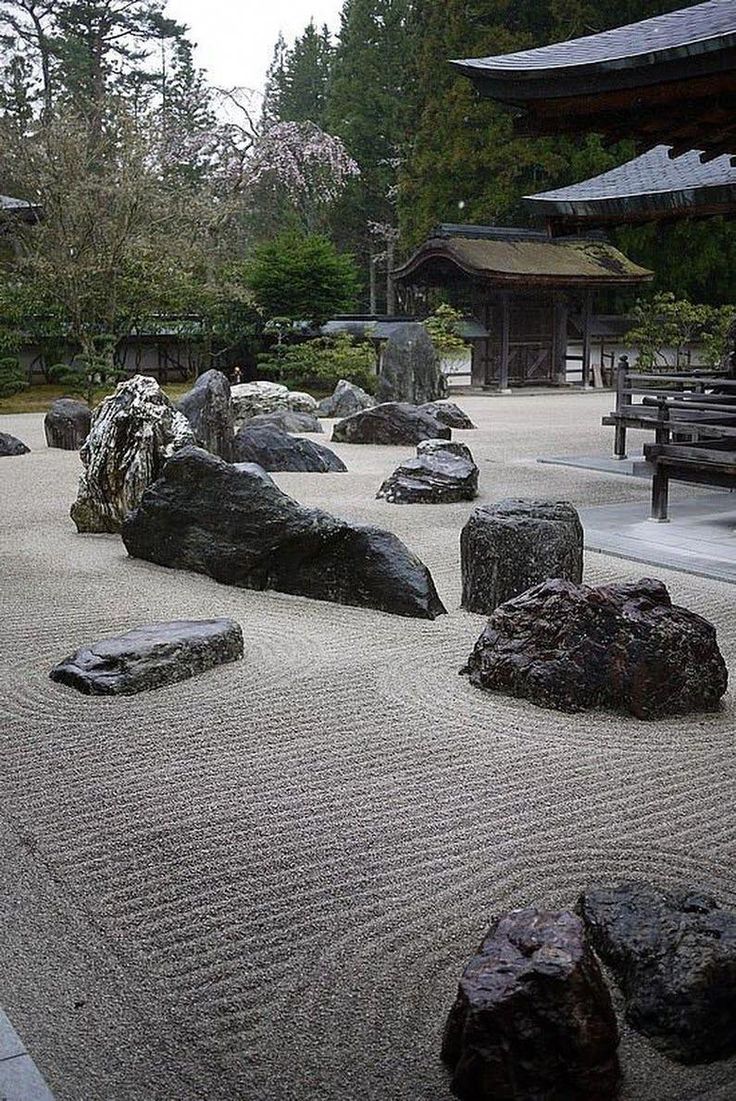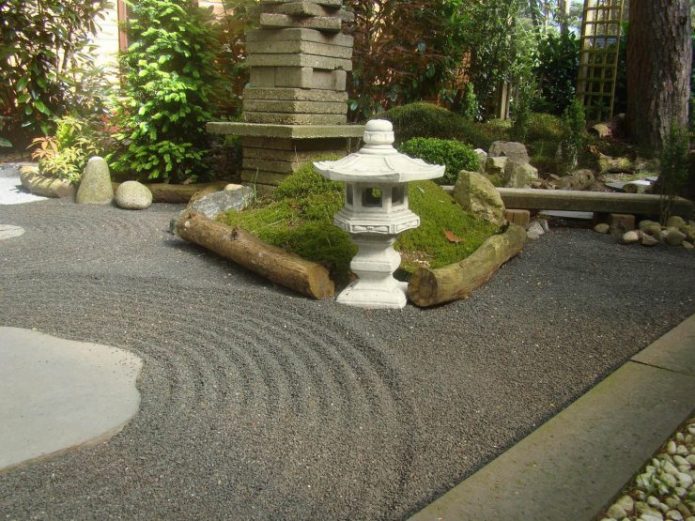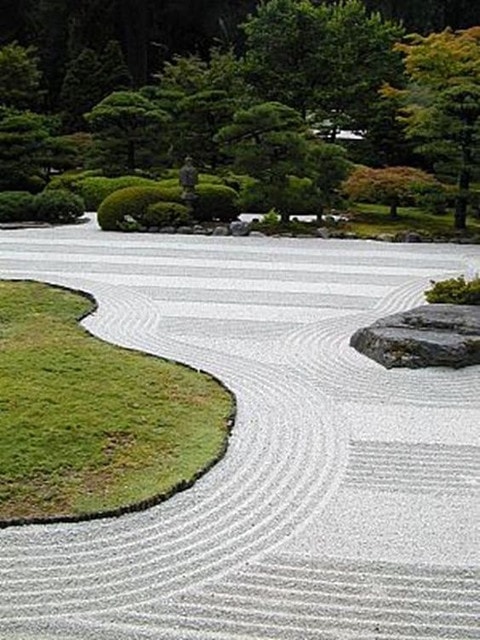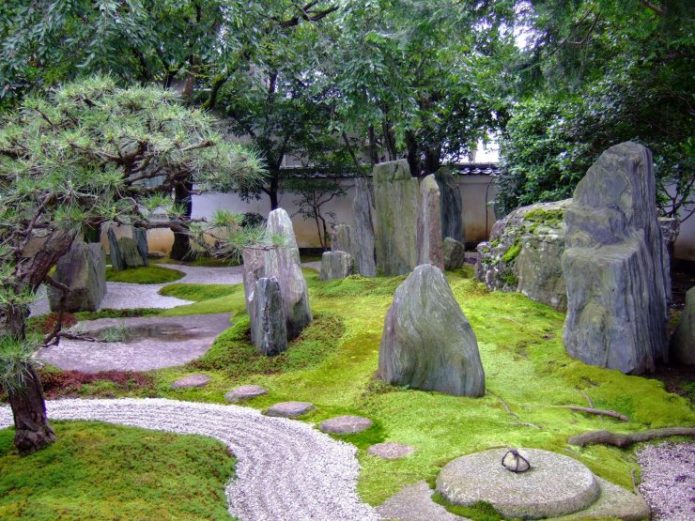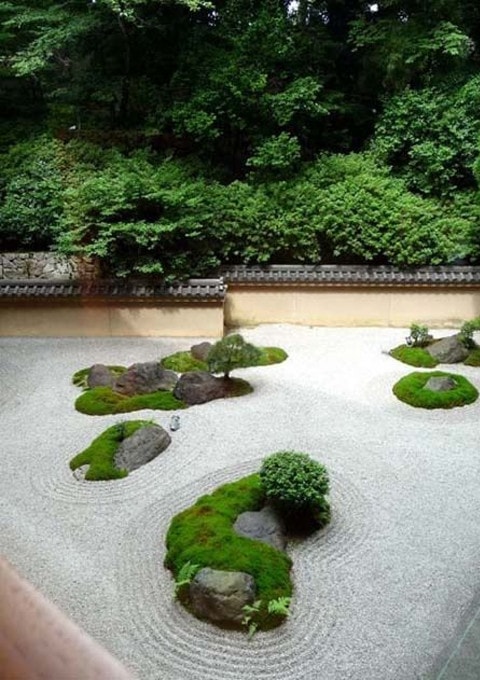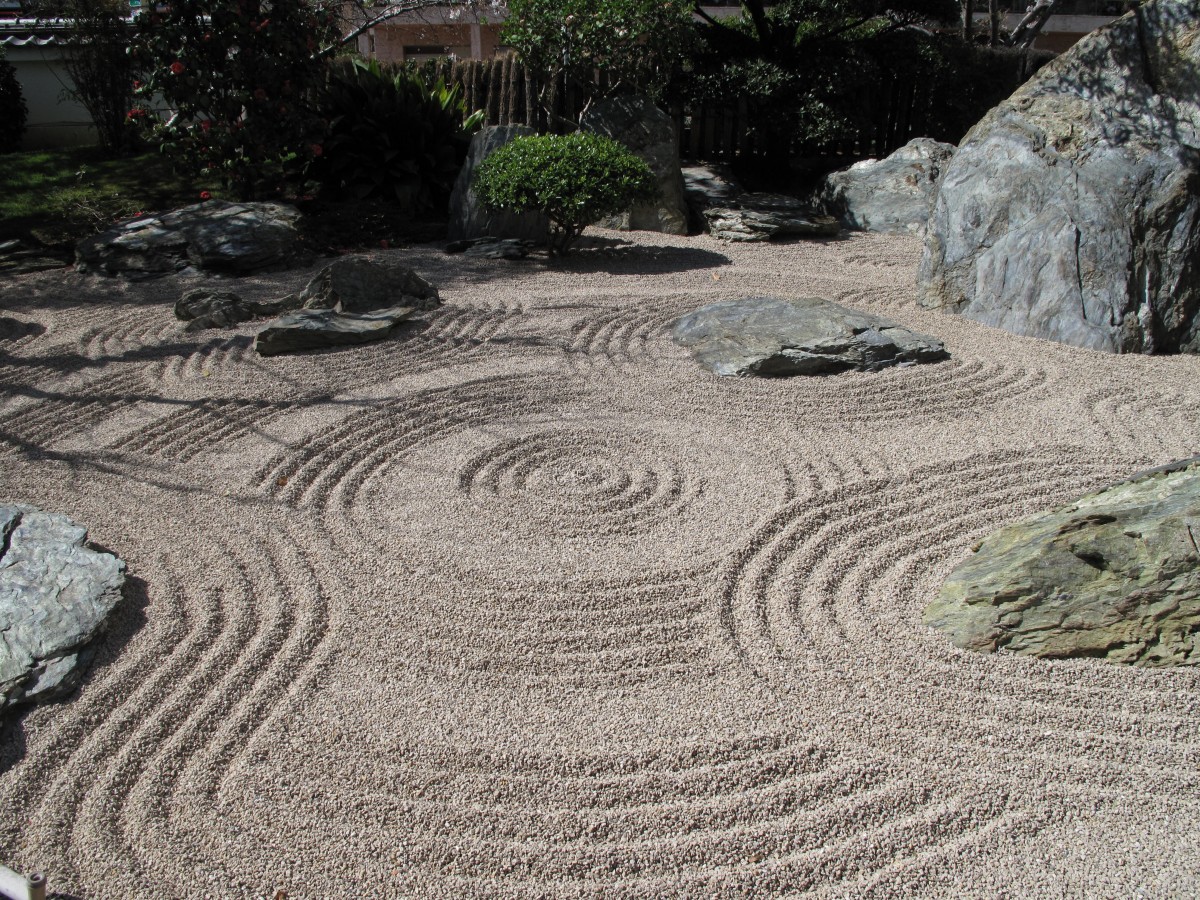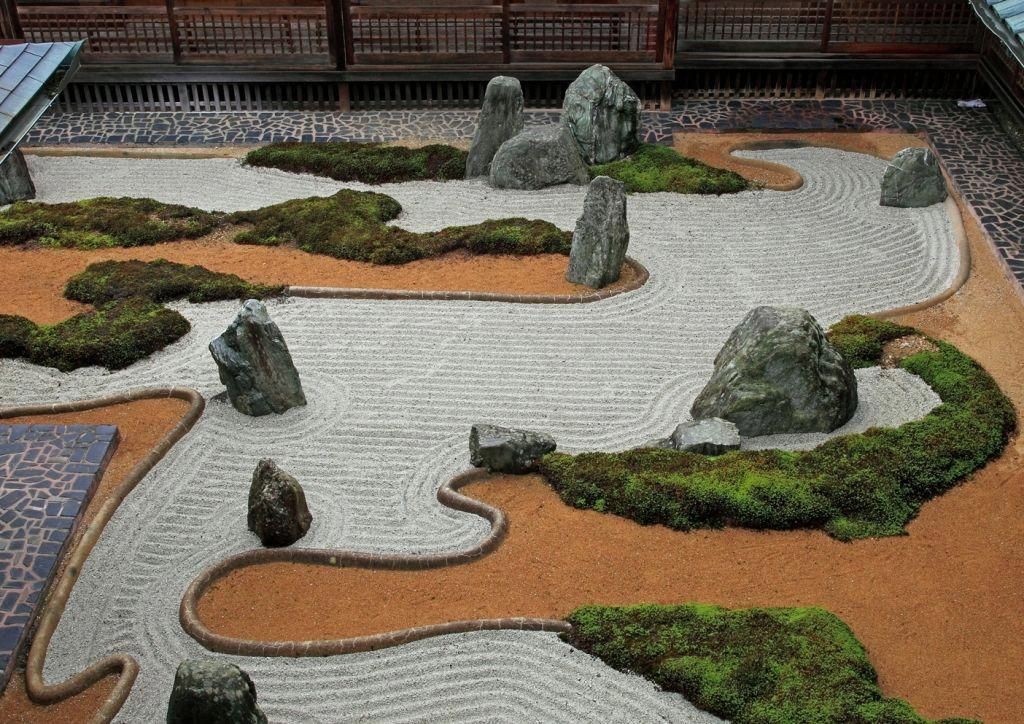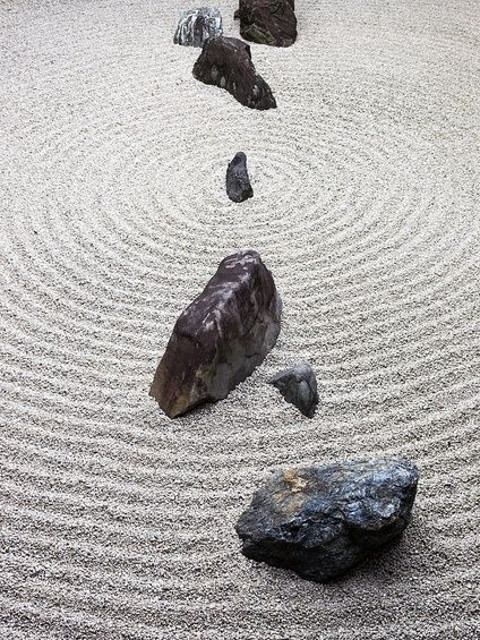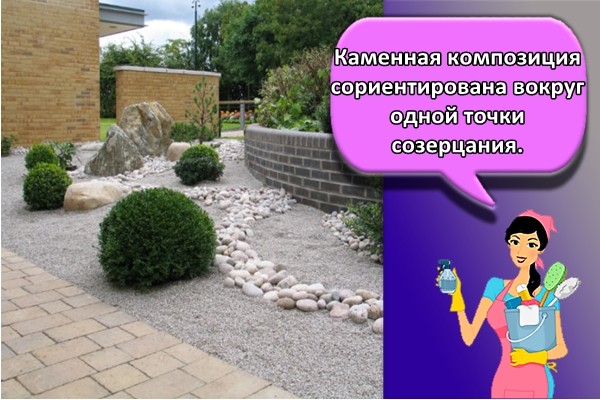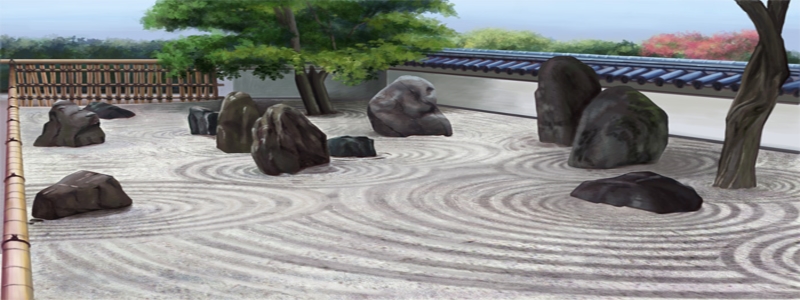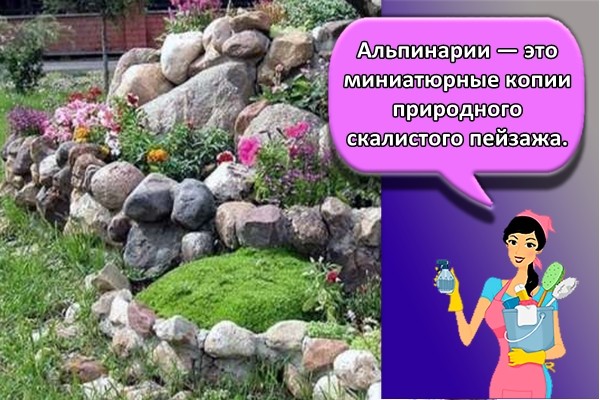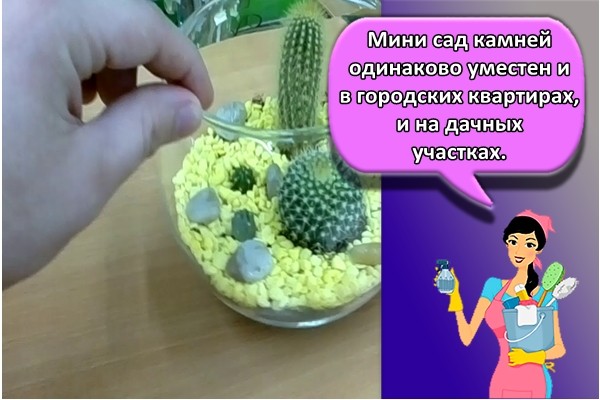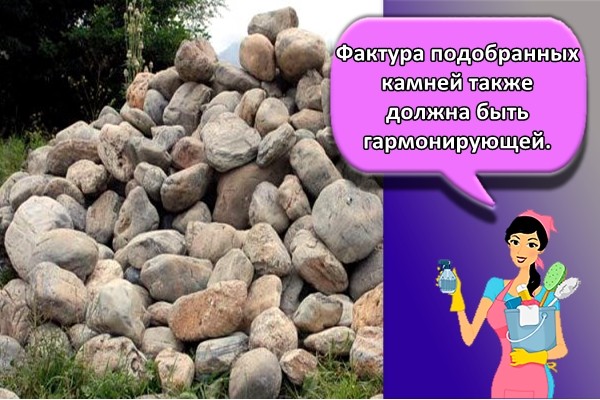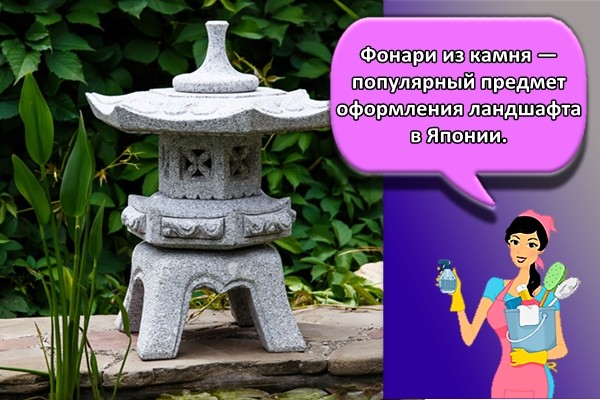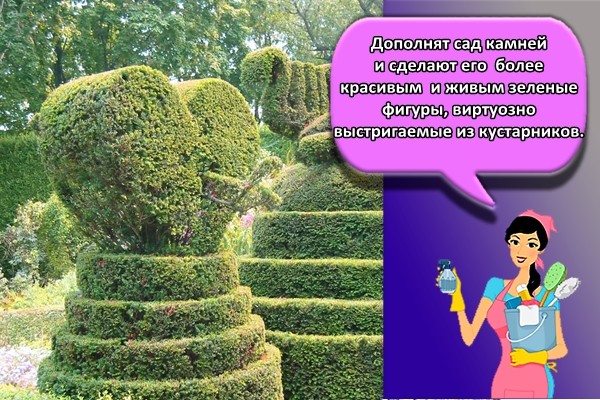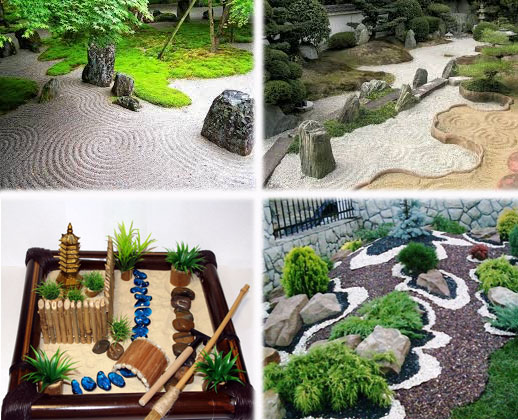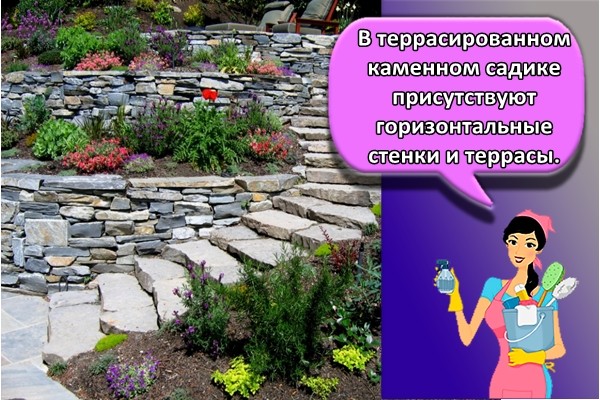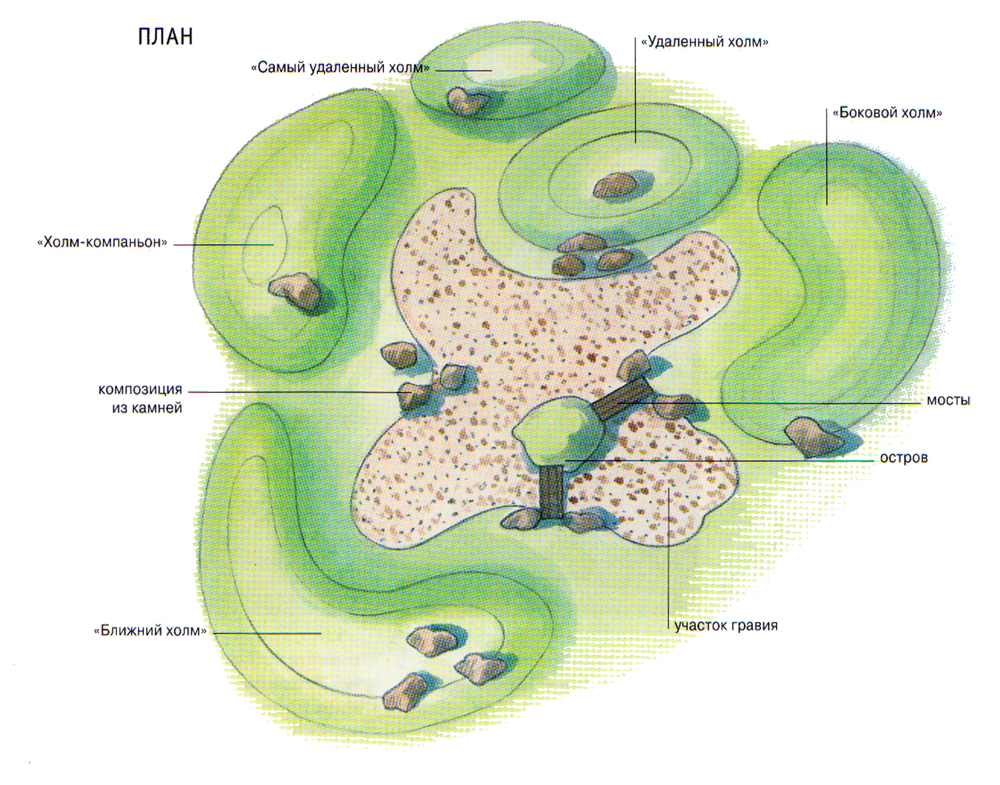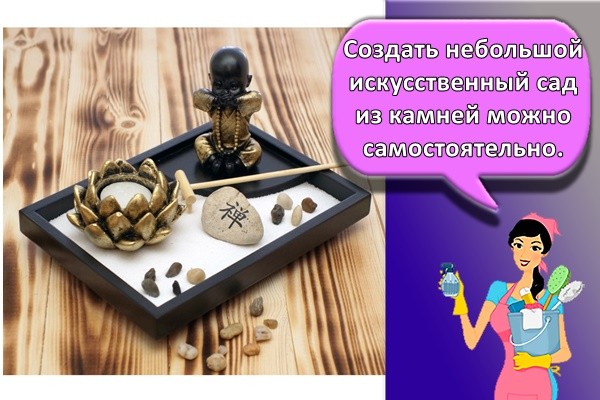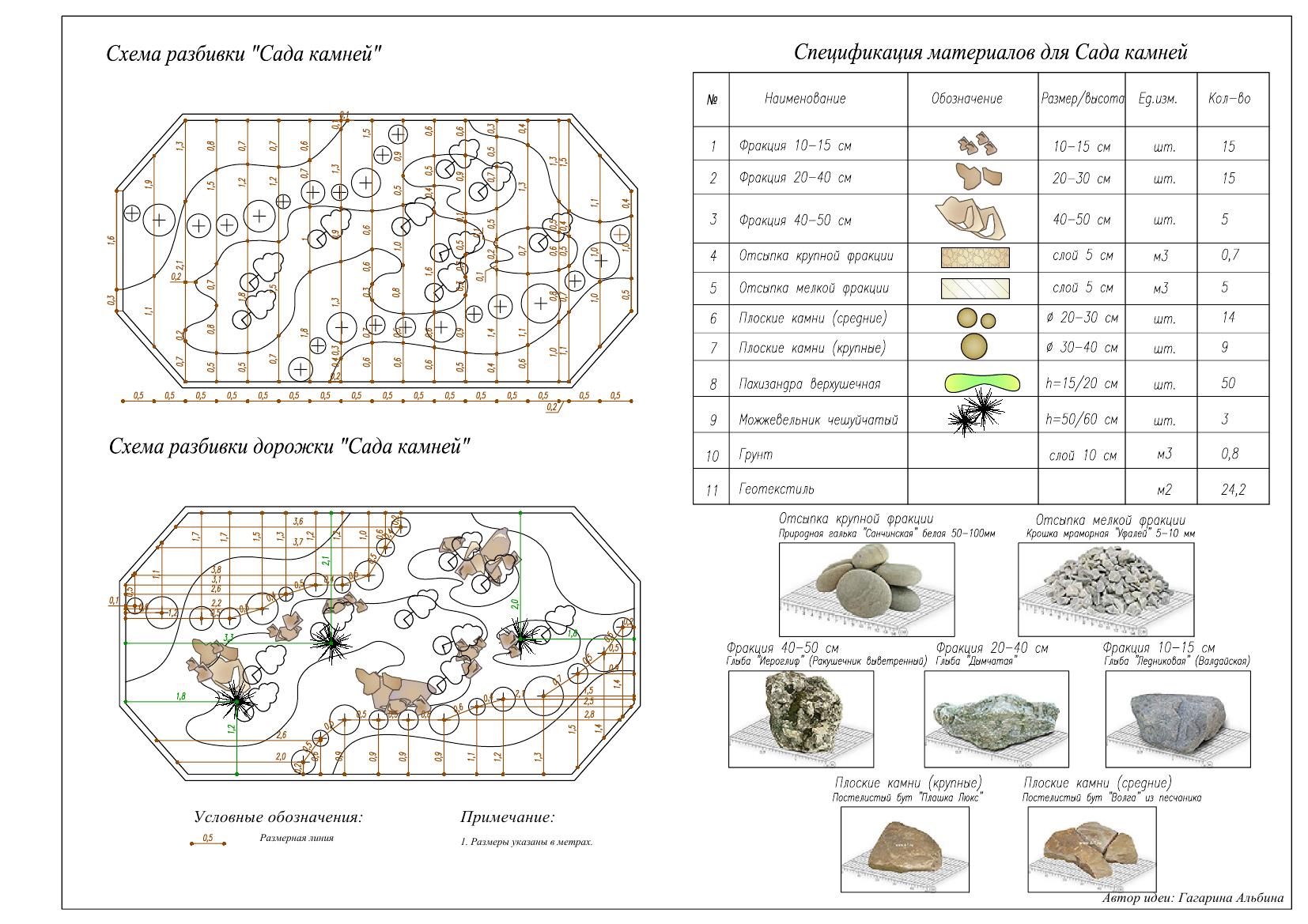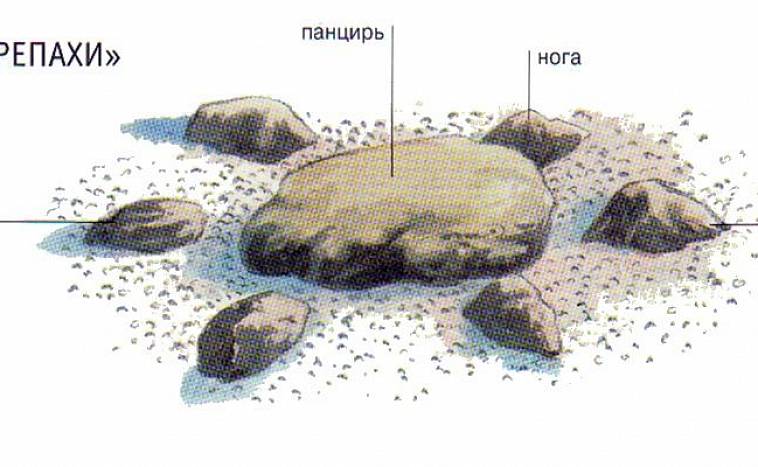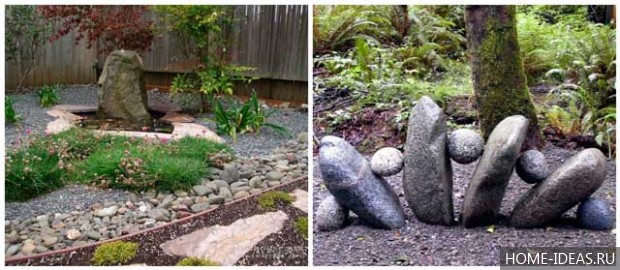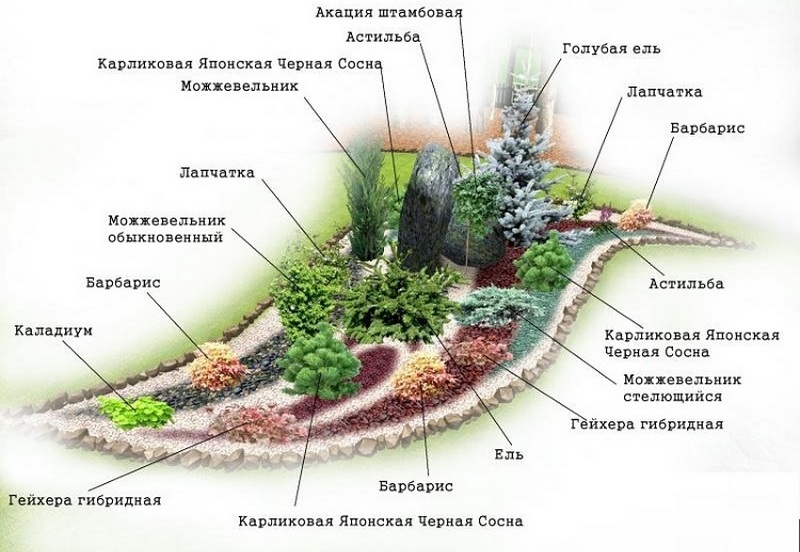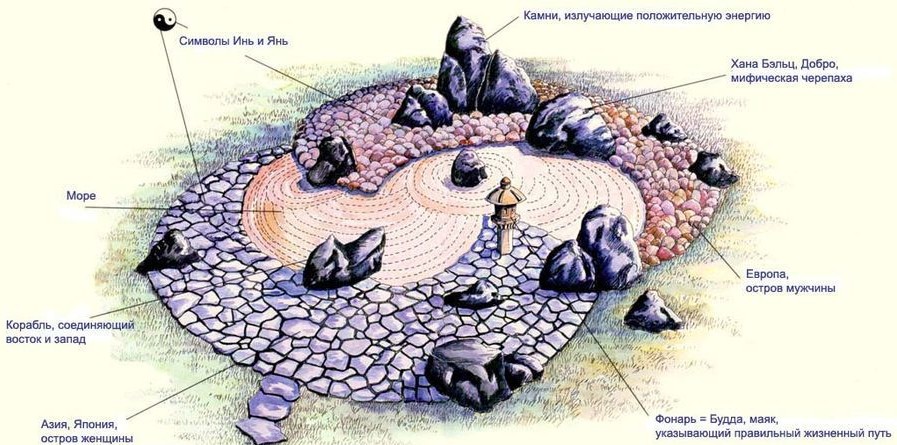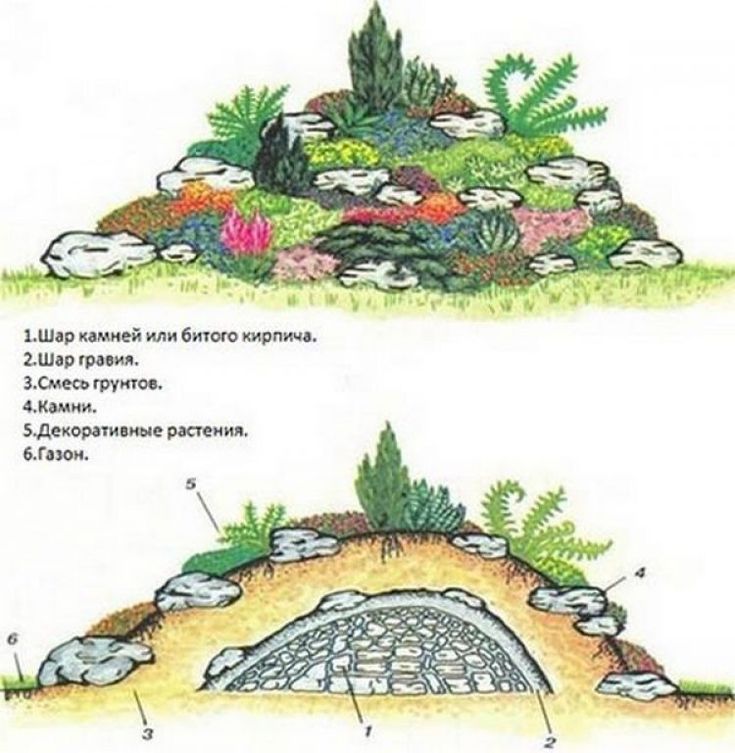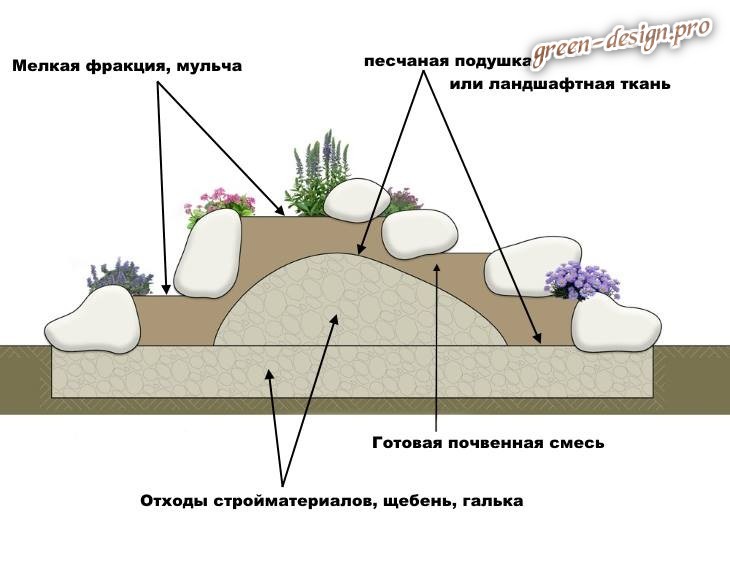The main elements and principles of the sekitei device
In the arrangement of a garden of stones with an apparently chaotic and random arrangement, everything is subject to strict rules, each element of the ensemble has a sacred meaning and deep meaning.
Number of stones
Traditionally, stones are arranged in groups of three, which symbolizes the divine concept of the triad: body, speech, thought. A single stone in the center can represent an island, a mountain, a planet, or a sacred animal. Most often 15 stones are used, but in modern compositions this rule is not strict, the main thing is that the number is odd, and one boulder is visually hidden from any angle. Processing should be minimal and natural looking.
Location and placement of stones
The arrangement of rock boulders occurs according to several principles:
- a combination of empty spaces and stones;
- choosing asymmetric boulders and avoiding parallel lines and elements of the same shape and size;
- the number of horizontal stones must exceed vertical ones for the correct balance of energy;
- harmony in each group of three blocks is achieved by arrangement in the form of a triangle, where one element dominates, and the other two have subordinate positions;
- cobblestones are deepened into sand or pebbles to create the illusion of growing out of the ground;
-
the site is marked out so that a beautiful view opens up from seven observation points and one stone is hidden from view.
Sand and gravel
Small pebbles and sand give the impression of fluidity and symbolize water or the world's oceans. On a perfectly flat surface, special rakes are used to draw grooves that imitate waves and flows of water, and circles around stones personify diverging circles from drops on the water.
Sand and small pebbles in the rock garden serve to depict water and its movement
To create the calmness of the water surface, gardeners do not use dazzling white minerals, but more neutral grays or browns. Smooth, parallel lines throughout the garden mean peace and inner balance.
Wavy lines resemble a stormy river or stream, show the direction of movement of water.
Is water acceptable
In the classical sense, a rock garden should be dry. Even its name translated from Japanese means "dry landscape" (sekitei), that is, water is unacceptable. But in the early versions, the paradise islands of boulders were placed precisely in small artificial ponds, and in the modern interpretation, you can sometimes find sekitei on the shore of a reservoir or right in a small pool. Of course, this violates the traditional principles of building a garden, but it looks very harmonious and beautiful, water has a beneficial effect on all living things around.
According to the classical canons, a rock garden should be dry, but in modern versions, water bodies are sometimes present
Moss
Moss is used everywhere in stone compositions, its low height and dense texture of the shoots perfectly imitate the forest thickets on the Paradise Islands of the Immortals. Muso Soseki, the great master and creator of the famous 15-stone garden in Kyoto, is also known for the construction of a huge moss park, on the territory of which various types of spore plants grow, which are used in landscape design. The master shows the wealth of nature with the help of a harmonious combination of shades and types of moss.
Moss perfectly complements and decorates the rock garden
Decorative elements
Modern landscape designers have moved away from strict canons and began to use various decorative elements in rock gardens, made in the Japanese style and complementing the landscape with interesting details.
Various Japanese-style decorative elements are often used in modern landscape design.
The paths are laid out from flat stones and other natural materials so that there are gaps for grass between them, as much as possible fit into the natural landscape, the same rule is followed when building bridges, fences, arranging sculptures and lanterns, Japanese stone turrets. A bridge made of a solid piece of rock or complex stone looks especially luxurious. In the old Japanese gardens, there are wooden bridges overgrown with moss, they merge with the surrounding nature, emphasizing the style of the park.
Care
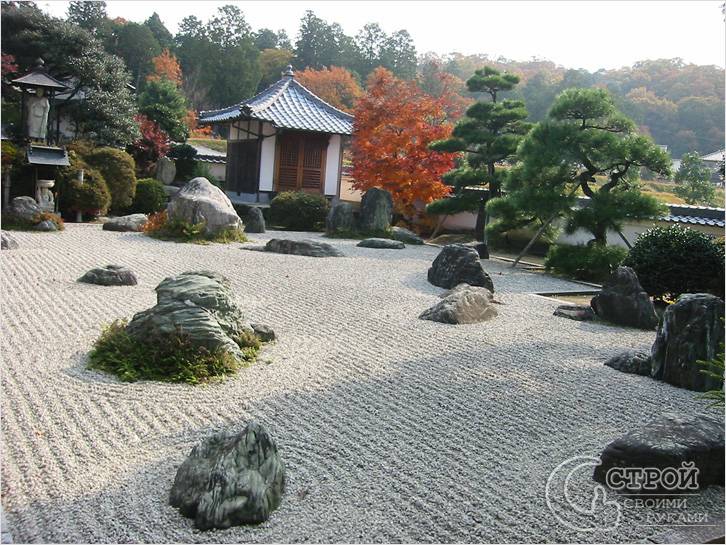 How to care for a stone garden
How to care for a stone garden
Of course, every creation created by man must be looked after. And the rock garden is no exception. Below are important grooming conditions to help you keep your creation intact!
- If there are plants in your rock garden, then the first time they need to be watered regularly. This is due to the fact that the plants should root well at first. Once they have taken root, you will need to reduce watering to suit their individual needs.
- Gravel, like any stone, retains moisture, preventing the soil from drying out. Therefore, later you can refuse watering for a long time. Ornamental grasses and plants growing in the meadow are drought-resistant in nature, they do not need a lot of moisture.
- Plants that thrive in a rock garden are unpretentious. They do not need additional fertilizers. In addition, it is worth noting that with minimal moisture and high temperatures, fertilizers only harm, because they burn the plants, and do not feed them with useful substances.
- The main problem of a stone garden is weeds. If they began to sprout, then it is impossible to get rid of them from under the gravel. In view of this, geotextiles are laid on the base, and the soil is thoroughly cleaned of weeds beforehand. In order not to spoil the garden, you will need to remove the emerging weeds in a timely manner.
- Removing debris from a stone garden is another challenge. A wire rake and a stiff brush are suitable for this purpose. Carefully sweep debris off the stone base. If the backfill is loose, then the garbage will need to be removed manually, which takes more time. Renew the gravel bed once every few years, use the crushed stone or other stone you originally used.
Do you have experience in building a rock garden? Or maybe you know how to care for him? Then share your skills with us! We will be glad if you write your comments on the article!
Rock garden with a pond
Owners of large areas can combine a stone garden with a pond. These two elements of landscape design always perfectly complement each other, creating real peace in your territory.
DIY rockery or a rock garden with a pond is not easy and expensive. You will need to make a lot of effort, but there are also pluses - the soil that you take out when digging a pit under a pond will work for the embankment of a hill, so you will not have to look for it somewhere else or carry it in a wheelbarrow from afar.
The process begins, as always, with markup. Try to make the slide and the pond comparable so that one does not get lost against the other. Then remove the turf and the top layer of soil from the entire area of the future composition and dig a hole under the pond.
To create a pond, you can use both film and ready-made molded forms of plastic or fiberglass. In any case, the hollow for the reservoir is dug 15-20 cm deeper so that there is room for drainage.
After the place is prepared, the laying and tamping of the drainage layer begins. Gravel or broken brick (10-15 cm) goes to its bottom, then a layer of sand (5-10 cm). The bottom is carefully leveled, and then covered with a waterproofing film or a pool bowl is placed on it, carefully leveling it relative to the ground level.
After the reservoir is prepared, the construction of the slide begins.It is done in the same way as the usual one, but at the same time the stones need to be dug in by a third so that they do not stagger or shift.
It is better to start landscaping this area 3-4 weeks after water is poured into the reservoir. All this time there will be shrinkage and compaction of the soil; rearrangement of stones or soil filling may be required.
At the very edge of the reservoir, it is better not to spread limestone - it will negatively affect the hardness of the water and can lead to the formation of sediment on the bowl of the pond.
You can plant some of the plants just above the water's edge - they will cover the edges of the bowl and make the reservoir more natural. For growing in rockeries with a pond, cypress, juniper, Japanese maple, saxifrage, cotoneaster, heather, yarrow, alissum, breakthrough, anemone, drainage basin, gerbil, aster, cyclamen, etc. are suitable.
In order for the panorama to take on a complete look, the hill must be covered with stone chips, pebbles or gravel.
Of course, there are many more options for creating cameo gardens. Maybe you have already done something unusual on your site?
We use the material given by the sea

Crafts made from sea stones are especially popular. Vacation at the sea makes it possible to deliver a huge amount of ornamental material. A little inspiration, desire, creative touch, the presence of plasticine, polymer clay, glue, colored paints will help to decorate any room and open space.
Macrame
The work is not difficult, it requires regularity and perseverance. Available for both children and adults. The following actions need to be taken:
- dense threads of different shades are taken (preferably bright) and braided with a "pigtail";
- several braids are intertwined;
- one large or several small pebbles are inserted into the center of the weaving;
- pigtails are connected by knots, braiding stones;
- you can decorate macrame with glued rhinestones of a suitable color.
Sea pebbles differ in their bizarre shape and shade. If you have a natural hole, you can simply thread a string and hang the jewelry around your neck. To make the stones more attractive, you can open them with varnish or paint them in a bright color.
Photo
Finding a large flat stone on the sea coast is not a problem. Using a drill, several holes are made in it, a thick silk thread is threaded. The bracelet is ready.
Small flat stones of various shades are suitable for making beads. A thin cord is threaded through the holes made. To give strength, all stones can be separated by knots. Do not forget to attach the lock.
A simple but rather unique craft. How to make a fridge magnet with your own hands? It is enough to find a small flat pebble, depict an animal (chicken, dog, kitten) on it. Attach a small magnet on the back.
Glass bottle decoration
We use sea stones and shells. We apply one of two options:
| Option one | A bottle is taken, decorated with small pebbles, creating uncomplicated drawings or patterns. Do not use glue. It is necessary to cover the glass with a thin layer of plasticine, on which to attach the ornamental material. |
| Option two | A transparent container is washed, dried, small pebbles, shells, glass pieces are placed inside. The bottle is closed with a lid. |
Stages of creating a Japanese rock garden in the country
drawing
In this case, the stones can have both a single placement and 5 groups. If the plot for a garden is small, it is preferable to use 7 stones, since a larger number of them will clutter up the space.
In order to make the garden as realistic as possible, it is recommended to acquire stones of volcanic origin, such as granite, tuff, andesite and chlorite.
Moreover, 3-4 of them should be of more significant size and attract appropriate attention.You will also need pebbles, gravel or coarse river sand, the amount of which depends entirely on the size of the area set aside for the garden.
So that your garden is not disturbed by weeds, prepare a film that will inhibit their growth. The site itself should be well lit and fenced with an opaque hedge. After carrying out all the above preparatory work, you can begin to implement the previously drawn up plan, for which you should:
carefully level the entire area, remove all weeds and tamp the ground;
then mark the site and in each place where the stone is intended to be placed, make a small depression corresponding to the size of each individual boulder;
cover these recesses with a film in order to protect the stones from weeds and put each stone in its own cell, while adding pebbles under the base of each of them. Thus, the feeling should be created that the stones present in the garden are only the tip of the iceberg.
By the way, it is very important to put the stone on the right side, since the inhabitants of the land of the rising sun believe that the stone has its own face;
scatter pebbles evenly around the entire perimeter with a thick layer of at least 7-8 cm;
in general, a real stone garden does not provide for the planting of any plants, but modern landscape design allows for such a possibility. The main thing is not to overdo it and keep all the severity of the forms, so the plants should be small in size and muted tones.
They are planted in the same way as in the design of alpine slides. The main disadvantage of vegetation in a stone garden is that you have to more diligently fight weeds, carry out constant watering and still move away from the original gardens created at Japanese temples;
in the case of the presence of decorative elements in the form of lanterns, tsukubai or a stone tower, we arrange them in their places;
then, armed with a rake, you should make stains and glare on the pebbles associated with the water element. So, circles are drawn around the stones, resembling the reaction of water due to an object falling into it, in our case a stone block. Straight longitudinal lines are drawn in the direction of the longer side of the garden. Such drawings, in favorable weather, will retain their presentable appearance for two weeks, therefore, their periodic editing, as well as spraying with water, is mandatory.
As a result, a very beautiful and holistic composition is obtained, which will become a real decoration of any suburban area. The stone garden creates a new and unexplored world, full of virgin purity and a special atmosphere, so if you need a place for solitude and purification of your mind from the everyday hustle and bustle, this embodiment of Japanese culture will be the perfect solution to the issue of decorating a free backyard territory.
Additional decor
An important element of the composition is the additional decor, which are used as:
- patterns in sand and gravel;
- tsukubai;
- small bridges;
- fences;
- lanterns.
Patterns in sand or gravel will perfectly complement the composition.
Particular attention should be paid to the patterns in the sand. For the Japanese, each of them has a specific meaning.
Their straight lines symbolize the surface of the water, and the curves - seething streams. The circles around the boulders represent the waves of the sea. Such patterns can be created using a rake with special attachments, the teeth of which have different widths and shapes.
Tsukubai brings light dynamics to a static Japanese garden
Tsukubai is a small stone bowl filled with water. The liquid enters it through pipes that are located underground. Tsukubai enlivens the composition without disturbing the overall atmosphere. In Japanese culture, bridges are the link between different periods of life.Small bridges made of horizontal solid stones will fit well into the composition.
A hedge will help recreate the privacy of a rock garden
Fences can be installed on one or both sides. At the same time, it is recommended to make a fence from an opaque material, for example, concrete or bamboo.
Compact lanterns fit perfectly into the design of a rocky garden
Small stone or wooden lanterns can be installed in the rocky garden. They will not only complement the composition, but will also illuminate the site in the evening and at night.
How to choose stones
The main principles for choosing stones for rockeries:
They must be of different sizes and necessarily the same shape. So, for example, rounded stones will not blend in with sharp rocks. Also, it is desirable that the composition be composed of stones of the same breed - so the rockery will look more harmonious and natural.
The style of rockeries and rocks should be chosen based on the style of your infield. The coarse rocks are ideal for the most natural rockery in an area with a traditional or rustic house and garden. Smoother, more rounded stones are more suitable for modern-style areas.
Rockery in a modern style
The landscape of the surroundings of your summer cottage can also suggest which stones to choose for rockeries. Maybe a river or a stream flows somewhere nearby? Then river pebbles and round stones are perfect for your garden. If there are rocks or mountains nearby, rough and sharp stones will do.
A few words about the main types of stones used to make rockeries in Russia:
Sandstone is a brittle stone that quickly becomes covered with moss, which can be an advantage for some compositions. Most often, the color of this breed is gray or beige.
Sandstone Rockery
Limestone - has a gray, white or cream shade. Like sandstone, limestone is loose and quickly weathered, from which its corners become less sharp, the surface is quickly covered with moss and lichens.
- Slate - has a gray or black color, and therefore it is better to combine it with more contrasting light stones.
- Tuff is a light, but durable stone, the proximity to tuff is favorable for plants, especially those that need slightly alkaline soil.
- Granite is a decorative, durable, but expensive, heavy and “cold” stone. In addition, it tends to oxidize the soil, which is harmful to many plants.
How to arrange a rock garden with your own hands ↑
The technology of laying a rock garden is simple and elegant, like everything Japanese. To do this, you will need "wild" stones, basic garden tools and a few hours of free time.
Step one. Rough site clearance
After you have decided on a place for your future garden, you need to clear the land from debris and unnecessary items. It is desirable that it be as horizontal and rectangular as possible. If there is a large slope, then it must be leveled with a shovel.
Step two. Layout
Remove the top layer of sod or soil from the prepared area. The depth is approximately 10-15 centimeters.
Step three. We strengthen the walls of the "pit" formed during excavation
For this, boards, bricks, natural or decorative stones for a small garden, laid out around the perimeter, are suitable.
Step four. We do dumping, form the surface of the garden
At the bottom of the site we put a "pillow" - a small layer of sand 5-6 centimeters thick. Then we fill the entire space with fine gravel, pebble or gravel to the ground level.
Step five. Sealing
We spill the prepared area with water to compact the rubble - at the rate of 1/2 bucket of water per 1 square meter of the garden.
Step six. We form a composition
Now it's time to establish a composition of large stones, pressing them into the rubble, so that they take a stable position.
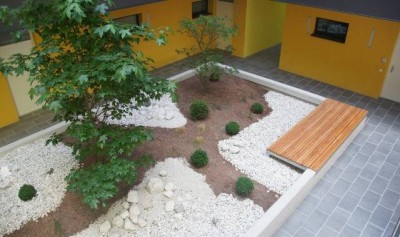 Original flower bed in the patio based on the garden of stones
Original flower bed in the patio based on the garden of stones
Step seven. Decorative leveling of the surface.
We carry out this procedure in two stages:
- The upper layers of crushed stone, small decorative stone or stone chips can be combined in the form of stripes-circles, diverging from large stones, imitating circles on the water.
- We level the rest of the small crumbs with a large rake along the horizontal and vertical sides of the site.
 Spiral Garden
Spiral Garden
Mini rock garden – a relatively new phenomenon in landscape design. They are especially widespread in very small areas or in the courtyards of urban high-rise buildings. For the device of a mini garden of stones, you can use decorative flowerpots, fancy stones with a natural depression, an old trough or a wicker basket, in a word, everything that your imagination will allow you.
If in their homeland Karesansui gardens have a completely functional meaning, then in our latitudes they are more of a design element. Moreover, it can be used to decorate even the smallest venues. Here is one of the interesting incarnations of the mini-garden of stones "yin-yang" in a small summer cottage. He certainly deviates from the principles of the traditional Japanese rock garden, but it's so cute!
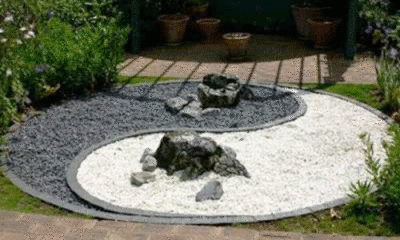 Yin-yang rock garden
Yin-yang rock garden
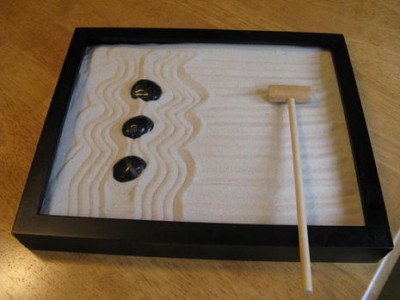 Desktop mini rock garden for home interior
Desktop mini rock garden for home interior
Supplementing with various elements
Stones are not the only elements in Japanese gardens. The landscape must be complemented by compositional structures. There is a place for paths, and fences of various shapes and stone statues. All this is an original part of the Japanese-style garden.
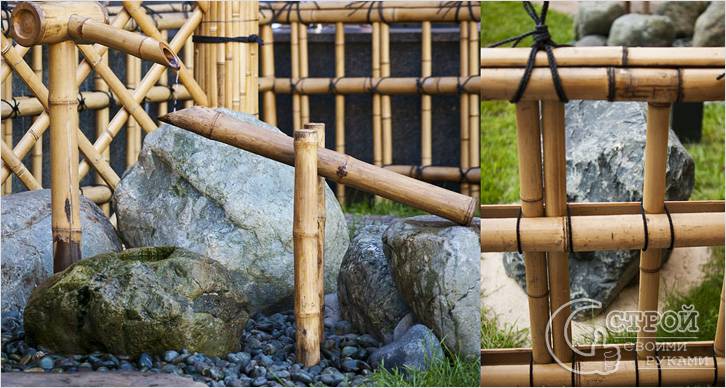 Bamboo waterfall
Bamboo waterfall
The paths of a soft winding shape only emphasize the harmony of the garden. Designers skillfully mask the originality and beauty of the material, thereby not upsetting the balance of regal grandeur and simplicity.
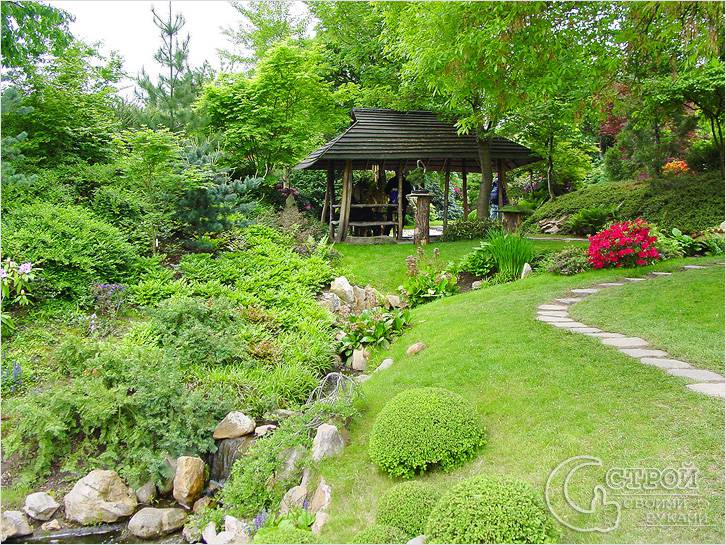 Winding path
Winding path
The fence is designed to create a calm environment and the possibility of privacy. In Japanese stone gardens, opaque fences are encouraged.
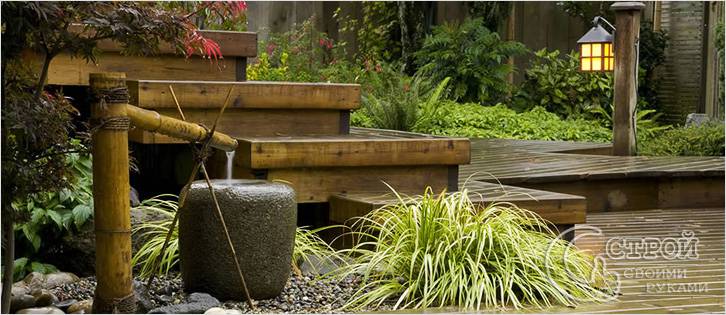 Tskubai
Tskubai
Tsukubai was originally used to wash hands before starting the tea ceremony. These are original bowls made of stone, with a standard height of about 30 cm. Now tsukubai is just an additional element of decor.
Rockery care
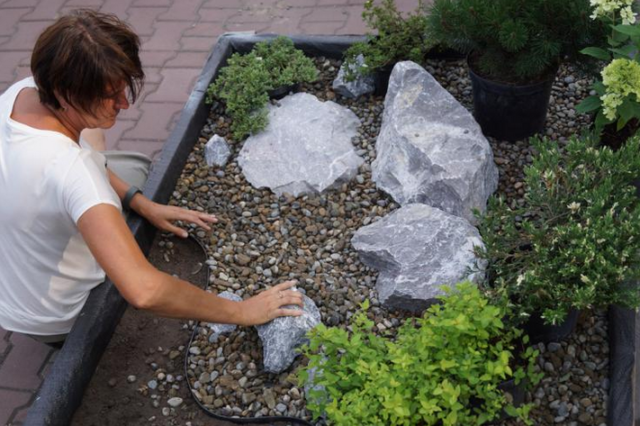
After arranging the rockery, it is looked after in the same way as other areas of the garden where there is ornamental vegetation. Geotextiles and stones keep weeding and irrigation to a minimum, but should not be neglected. Potted crops planted in the ground together with the container require special care; they need more frequent watering and feeding.
To moisten a rocky garden in the country, use a hose with a spray nozzle or pour water under the root using a low pressure. When it seeps out from under the stones, rearrange the hose. Before covering the soil with geotextiles, you can make small holes around each plant so that water is absorbed under the root.
Plant feeding is done with water-soluble fertilizers after watering. Each culture uses its own complex. Taking into account the peculiarities of a rocky garden, feeding is carried out 1-2 times a year, the plants should not grow quickly. For flowers planted with the container, more frequent fertilizing can be done, for example, once a month. Conifers do not need fertilizers at all.
Important! A rocky garden in the country must be kept clean, weeds must be removed and stones washed.
Weed seeds are carried by the wind, so they remove the green shoots that appear on the pebbles with their own hands. They can be easily pulled out as they cannot fully take root. If the rockery in the country is heavily contaminated with dust and debris, the pebbles are collected and washed once every few years. Then they are returned to their place, after checking the integrity of the agrotextile.
Pruning of plants is carried out in accordance with the season and the need for each species.For example, in the summer after flowering, spring perennials are cut off, junipers and box trees are given the desired shape. In the spring, before the leaves bloom, sanitary pruning of ornamental shrubs is done, removing dry and broken branches, thinning the thickened crown of overgrown specimens.
You can always add annuals to rockeries in the country to add bright colors and fill the place until perennials have grown. In the foreground, it will be interesting to look at petunia or osteospermum. Transplanting old shrubs and perennial flowers is carried out as needed. Large specimens that need rejuvenation are dug up and divided, planting a part in a new place.
Composition principles
The most important principle of drawing up a Japanese garden is the orientation of the composition around a single point of contemplation. It is chosen in accordance with the time of day that you will spend in this garden. Most often, the point of contemplation is located on the north side, but other variations are also possible.
The next principle to consider is the need to maintain a contrast between filled and unoccupied space. In addition, asymmetry should be present in the basic concept of the garden. As for the designers in Japan, they even take into account the light and shade and the reflection of objects in the water.
Another principle is the number of elements, it is worth considering that the figure must be odd. Objects in a stone garden should be oriented according to a regular geometric heptagon.
Note! Landscaping designers in Japan recommend balancing horizontal and vertical lines when creating a rock garden.
Stones placed horizontally should prevail over those placed vertically. The fact is that there will still be more vertical lines in a Japanese stone garden due to structures, trees and fences. Horizontal orientation will dilute the verticality of other structures.
Use of the reservoir
A small pond, beautifully framed by stones, will make the space more harmonious and serene.
To create it correctly, you must:
- Choose a suitable location on the site. Tall trees and other plantings should not be placed near the future reservoir.
- On the surface of the earth, outline the desired shape of the reservoir in accordance with the plan.
- Mark the contours by driving in sharp pegs and pulling the rope.
- Dig a hole at least half a meter deep. In this case, its shape can be arbitrary.
- Pull out weeds together with roots and compact the soil.
- Add a 10 cm layer of sand and tamp everything again.
- Perform effective waterproofing using PVC sheeting or durable butyl rubber. Beyond the boundaries of the future reservoir, the waterproofing material should extend approximately half a meter from all sides. You can disguise and decorate this element by laying well-chosen pebbles around the reservoir.
- The final stage of the arrangement is planting plants and direct filling with water.



